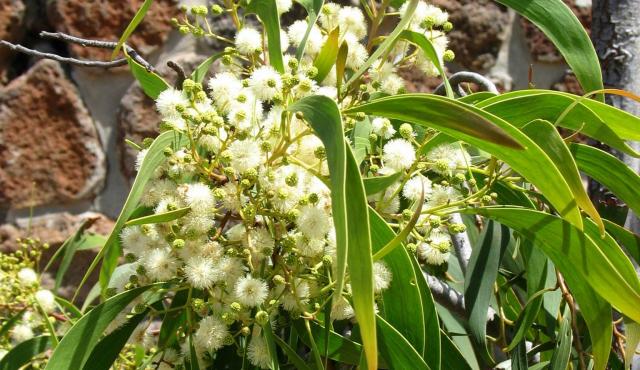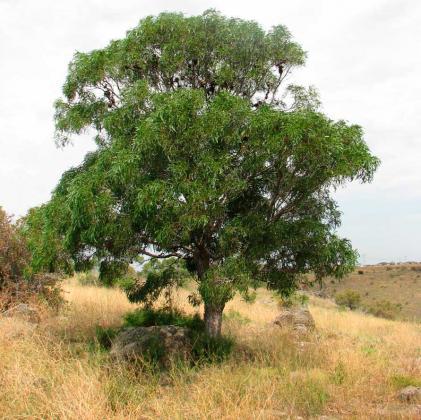

Lightwood
Acacia implexa
A small-medium tree with hard, grey-brown bar, growing to 12 m. The leaves are light-green and sickle-shaped. The cream-coloured flowers are made up of many florets in a ball shape. Seedpods are curved or twisted.
| Details | |
|---|---|
| Flora Type | Trees |
| Distinctive Features | The sickle-shaped leaf has distinct parallel veins with numerous fainter ones parallel and branching but not giving an impression of a net. Feathery twice-divided (bipinnate) leaves may persist on some plants. |
| Biology | Perennial. Flowering is influenced by rainfall. Pollinated by insects. Seeds are dispersed by birds and ants. |
| Flowering Time | Dec-Apr |
| Taxonomy | |
|---|---|
| Phylum | Tracheophyta (Vascular Plants) |
| Class | Magnoliopsida (Flowering Plants) |
| Order | Fabales |
| Family | Fabaceae |
| Genus | Acacia |
| Species | implexa |
Leaves and bark were used by the Aboriginal people for dyeing fibres. Pollen is 25% crude protein which makes it suitable for honey production by bees. In NSW the fresh gum was eaten once flowering had finished. A damper was made from the wattle seeds and baked.
| Interesting Facts | |
|---|---|
| Similar Species | Distinguished from Blackwood A. melanoxylon by summer flowering period. |